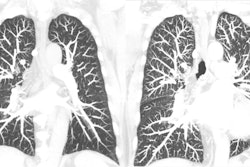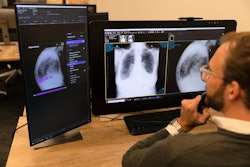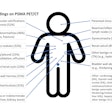Dear AuntMinnie Member,
Our most popular story on AuntMinnie.com this week featured an incredible story of how a chest x-ray detected a potentially explosive grenade from inside a Ukrainian soldier. After the grenade was detected, Ukrainian military doctors were able to successfully remove the grenade without incident.
Another highly viewed story in the Digital X-Ray Community reported on new research recommending the use of spinal x-ray exams prior to androgen deprivation therapy in men with prostate cancer. By helping to determine the risk of vertebral fracture, spinal x-rays could enable patients to be given preventive measures to reduce the risk of fractures, according to the Dutch team.
Brain PET/MRI
Meanwhile, PET/MRI scans have uncovered significant structural and metabolic brain abnormalities in patients with visual snow syndrome, a recently recognized chronic neurological condition characterized by the constant perception of tiny flickering dots throughout an individual's entire visual field.
PET is also helping researchers understand the role of the serotonin system in the preclinical course of Alzheimer's disease. A recent study has revealed a link between serotonin brain activity and beta-amyloid deposits in patients with early Alzheimer's disease, a finding that could potentially open avenues for new treatment approaches.
Additionally, an experimental F-18 prostate-specific membrane antigen radiotracer is showing promise for enabling better treatment decisions in patients with recurrent prostate cancer.
Stop by our Molecular Imaging Community for more articles on molecular imaging topics.
Imaging surveillance shortfall for DCIS
Surveillance imaging is recommended for breast cancer patients who receive treatment for ductal carcinoma in situ (DCIS). But researchers have found that nearly half of women receiving treatment for DCIS are not consistently following these guidelines in the first five years after treatment. What's more, surveillance uptake was significantly lower in Black women and Hispanic women than in white women.
Although overall cancer mortality continues to drop, female breast cancer incidence rates have been slowly increasing each year since the mid-2000s, according to a new report on cancer published this week by the American Cancer Society. You can learn more by visiting our Women's Imaging Community.




















